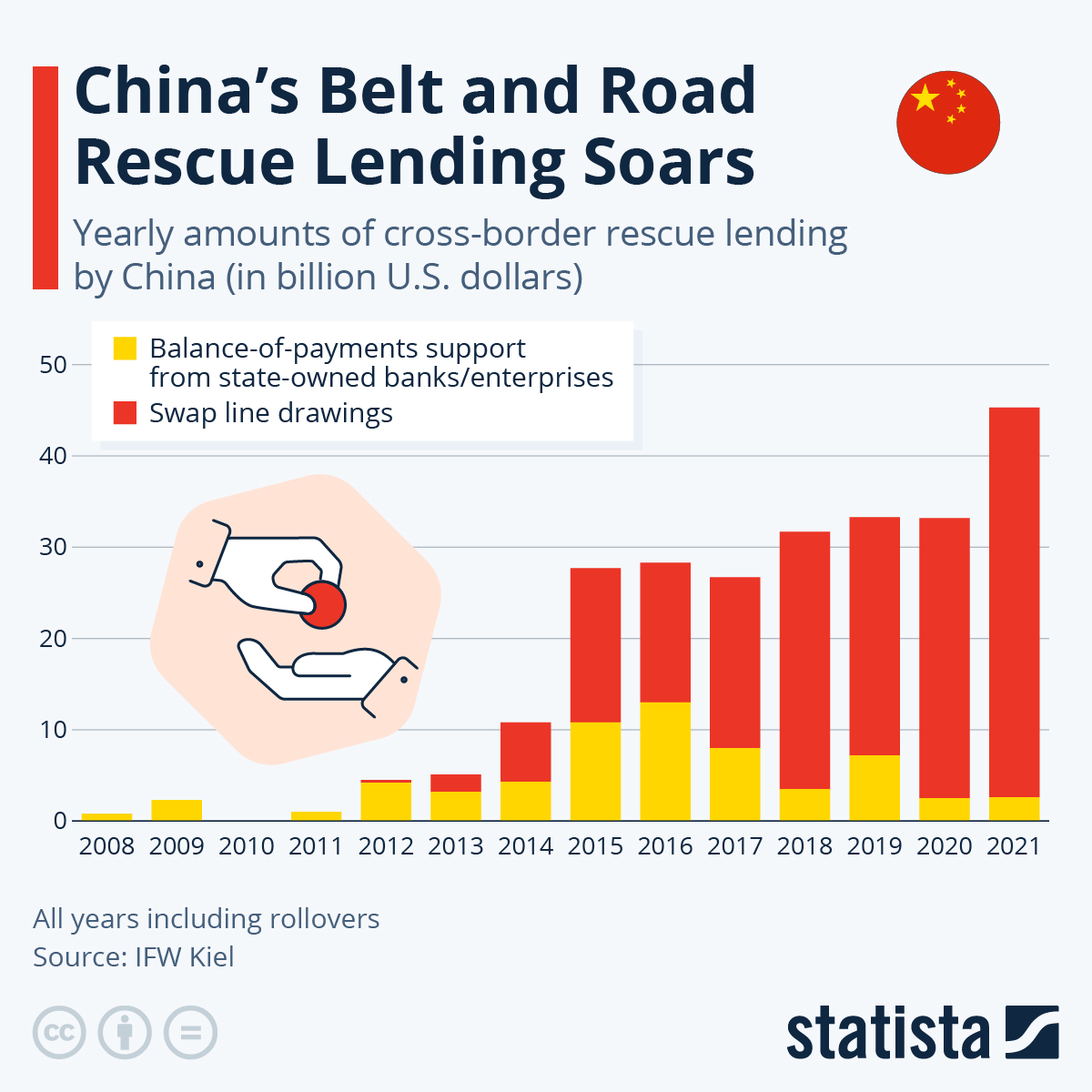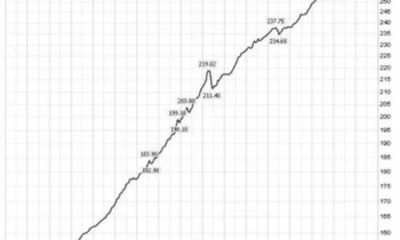Economics
China’s Belt-And-Road Rescue Lending Soars
China’s Belt-And-Road Rescue Lending Soars
As China’s Belt and Road Initiative enters its second decade, the country has been celebrating…

China’s Belt-And-Road Rescue Lending Soars
As China’s Belt and Road Initiative enters its second decade, the country has been celebrating with much pomp and many global leaders in attendance.
But, as Statista’s Katharina Buchholz details below, China’s high-level infrastructure and international development program has not been free of controversy.
The Kiel Institute for the World Economy has identified a major rise in emergency loans to countries having difficulty repaying debt taken on as part of Belt and Road projects.
Additionally, China’s loan conditions and transparency practices are being criticized by the researchers.
You will find more infographics at Statista
Between 2015 and 2021, China extended substantial emergency lines of liquidity swaps to Belt and Road countries like Mongolia, Egypt, Pakistan, Sri Lanka and Turkey, many of them being rolled over and often increased for several years in a row. Oman, Angola and Venezuela as well as some of the countries mentioned above also received medium-term loans of at least $1 billion each as balance-of-payment support in that time frame.
Mongolia’s high debt to China became a problem when the mineral-rich country fell on hard times after the 2000s commodities boom fizzled out. In 2021, its external debt to China still stood at 24 percent of gross national income, one of the highest ratios in the world. Both big Belt and Road borrowers, Pakistan and Egypt had to accept large-scale bailouts from China while their economies have been flailing. The share of China’s borrowers in distress has increased so steeply in recent years that 60 percent of the country’s overseas lending portfolio supported these countries in 2022, up from just 5 percent in 2010.
In 2015, bailouts from China shot up to almost $30 billion, from just around $11 billion the year before, as China upped its emergency loans to distressed Argentina by more than $8 billion. The country only joined Belt and Road in 2022 but did borrow from Beijing before that. The same year, China also provided $10 billion as a balance-of-payment support to Venezuela.
While going into debt to finance large-scale infrastructure projects is not unusual for countries around the world, China’s development loans have less favorable conditions than those of other available sources, for example the International Monetary Fund, the World Bank or Paris Club countries. This includes higher interest rates and shorter repayment windows, which can become a problem especially for poorer countries. The same is true for Chinese bailout loans, which the IFW Kiel found to typically carry an interest of 5 percent as opposed to the 2 percent rate the IMF charges.
Tyler Durden
Tue, 10/31/2023 – 05:45
commodities
monetary
interest rates
bailouts

Argentina Is One of the Most Regulated Countries in the World
In the coming days and weeks, we can expect further, far‐reaching reform proposals that will go through the Argentine congress.
Crypto, Crude, & Crap Stocks Rally As Yield Curve Steepens, Rate-Cut Hopes Soar
Crypto, Crude, & Crap Stocks Rally As Yield Curve Steepens, Rate-Cut Hopes Soar
A weird week of macro data – strong jobless claims but…
Fed Pivot: A Blend of Confidence and Folly
Fed Pivot: Charting a New Course in Economic Strategy Dec 22, 2023 Introduction In the dynamic world of economics, the Federal Reserve, the central bank…















